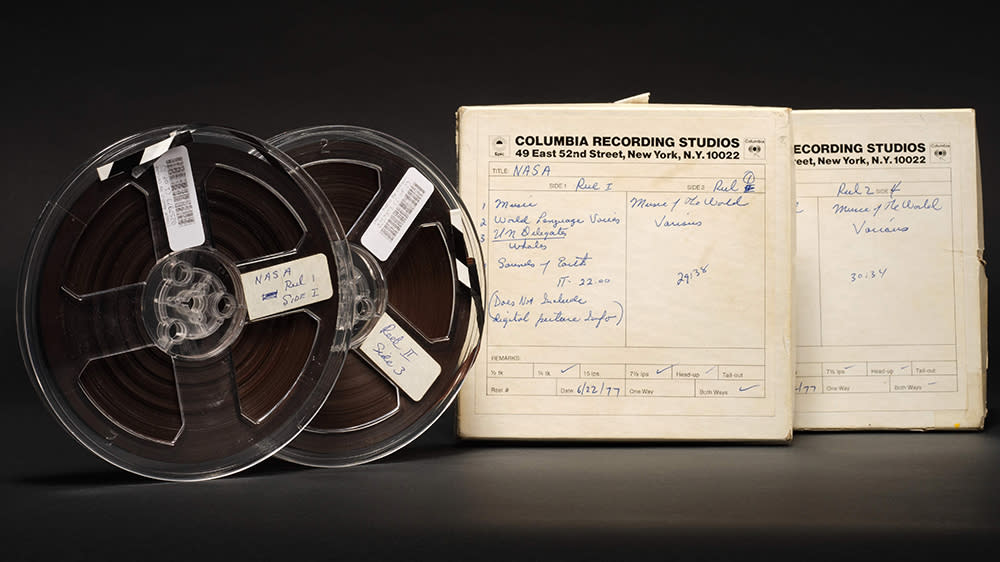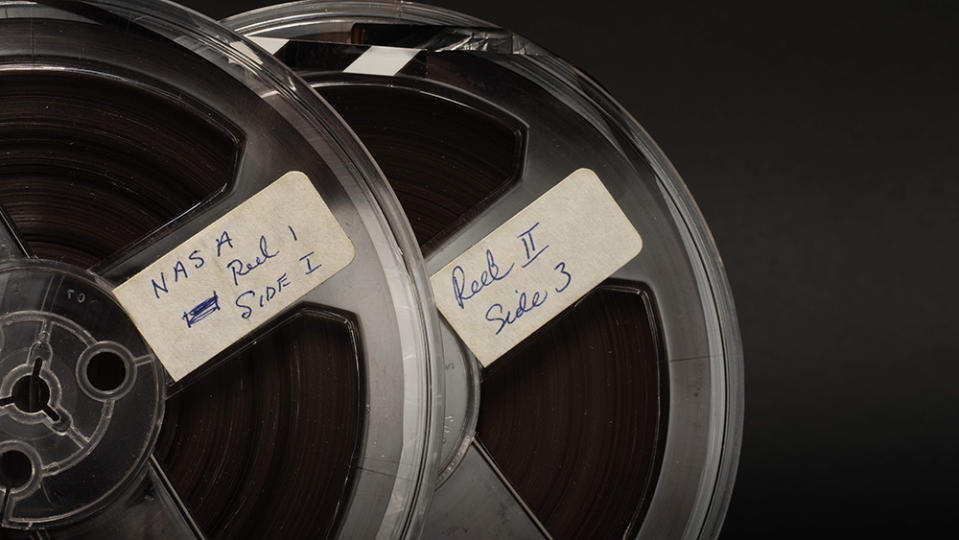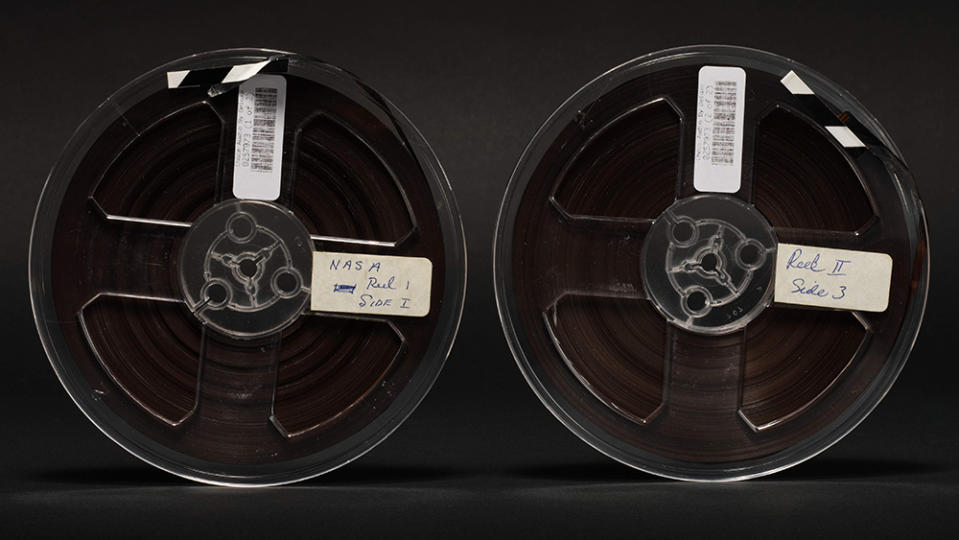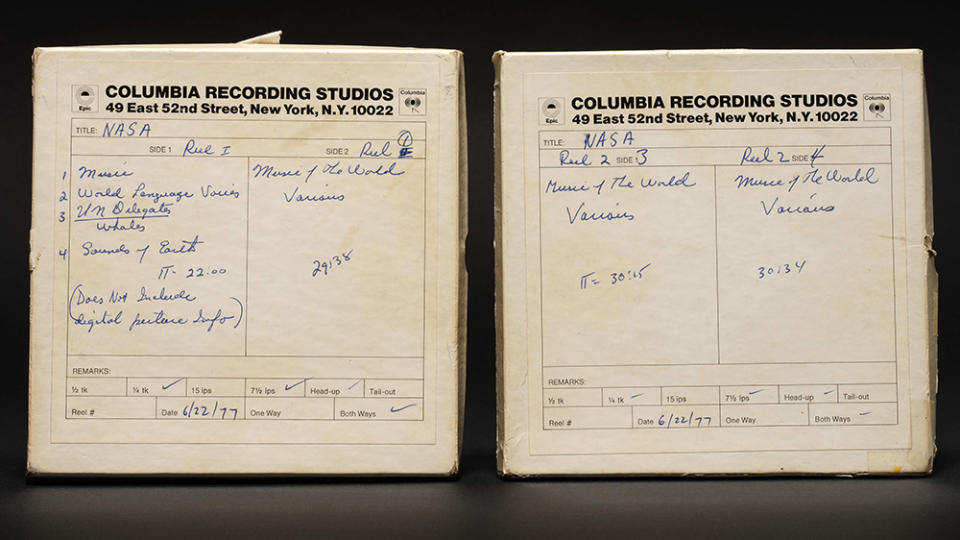A Copy of NASA’s Voyager Golden Record Could Fetch Up to $600,000 at Auction

In the 1970s, NASA asked astronomy professors Carl Sagan and Frank Drake to create a record synopsizing humankind to send into space with the Voyager 1 and 2. It could now be sent to your home, too.
A copy of the master recording of the Voyager Golden Record will go under the gavel at Sotheby’s this month. The audio-visual time capsule, which is expected to fetch between $400,000 and $600,000, represents a seminal moment in the history of space exploration. In fact, Sotheby’s says it is the first time an object relating to the famed Voyager Mission has been offered at auction.
Voyagers 1 and 2 were launched in 1977 to study the outer solar system and interstellar space beyond the heliopause. NASA decided to equip the robotic probes with a message that could communicate to any other space-faring civilizations something of the diversity of life on Earth. Sagan, his future wife, Ann Druyan, and four colleagues created the sound essay over the course of six months. It became the very first item of its kind to be sent beyond our Solar System.

The Golden Record features the geological sounds of our planet: a rainforest teeming with life, a mother’s first words to her baby, the brain waves and heart sounds of a young woman in love, and the rasping of a rapidly rotating neutron star. It also includes tunes by Bach, Beethoven, Mozart, Stravinsky, Louis Armstrong, and other notable musicians. Chuck Berry’s “Johnny B. Goode” even made the cut. Druyan was the director of the project and played a leading role in curating the music, which is meant to reflect the human experience.
Click here to read the full article.
“Bursting with the myriad sounds of life, Carl and I and our colleagues designed the Golden Record to be a testament to the beauty of being alive on Earth,” Druyan said in a statement. “We hoped it would capture the richness and diversity of our world.”

The record was then made of copper and plated in gold. Only eight copies were made, including the two on the actual probes. (The tape heading to auction is Sagan and Druyan’s personal copy.) The record’s gold-tinted aluminum cover has an ultra-pure sample of the isotope uranium-238 electroplated upon it. This serves as a clock, as Uranium-238 has a half-life of 4.468 billion years. The cover is etched with scientific hieroglyphics that spell out our star’s address among the nearest pulsars, as well as the unit of time for the record’s speed and instructions to play it. The words “To the makers of music—all worlds, all times” were also hand-carved onto the surface.
Today, the Voyager probes containing the Golden Record are the furthest man-made objects from our planet and will continue to float among the stars of the Milky Way for billions of years.

“Almost half a century since their creation, these tapes, which have never been out of our possession since they were made, present a unique opportunity for a collector to obtain the only original version of the first object to cross the heliopause, that place where the solar wind gives way to the gales of interstellar cosmic rays—it may be the only thing that will live on after everything we know is gone,” Druyan adds.
Best of Robb Report

